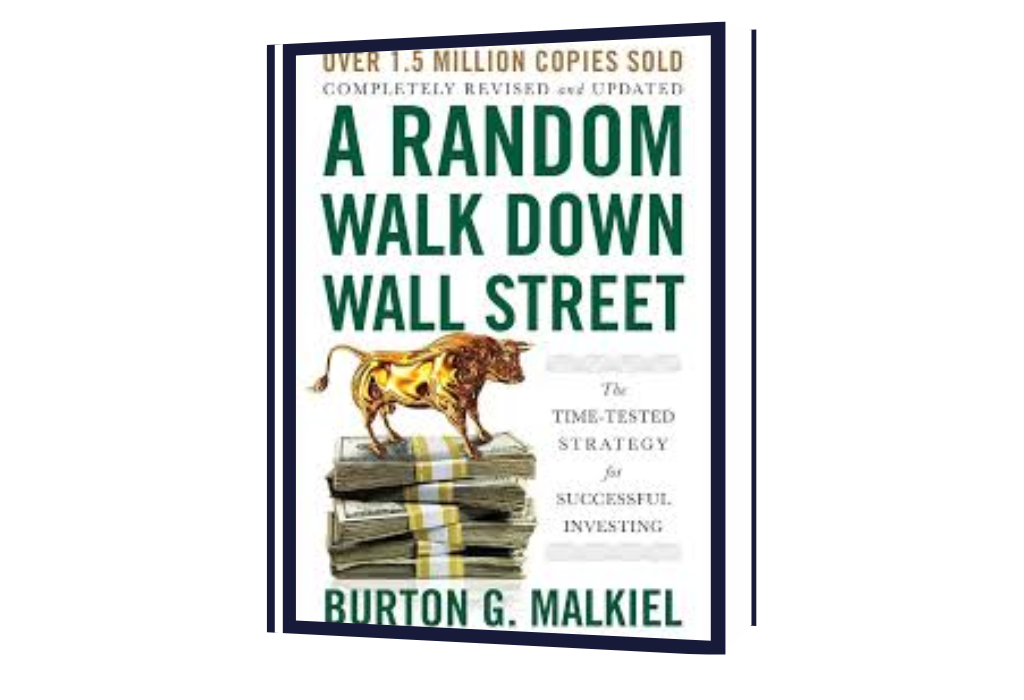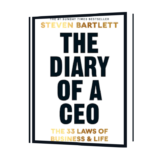Today’s stock market is not for the faint of heart. At a time of frightening volatility, what is the average investor to do?
The answer: turn to Burton G. Malkiel’s advice in his reassuring, authoritative, gimmick-free, and perennially best-selling guide to investing. Long established as the first book to purchase before starting a portfolio or 401(k),A Random Walk Down Wall Streetnow features new material on “tax-loss harvesting,” the crown jewel of tax management; the current bitcoin bubble; and automated investment advisers; as well as a brand-new chapter on factor investing and risk parity. And as always, Malkiel’s core insights—on stocks and bonds, as well as real estate investment trusts, home ownership, and tangible assets like gold and collectibles— along with the book’s classic life-cycle guide to investing, will help restore confidence and composure to anyone seeking a calm route through today’s financial markets.
A Random Walk Down Wall Street” by Burton G. Malkiel is a comprehensive guide to investing in the stock market and other financial assets, with an emphasis on long-term, passive investment strategies. The book, first published in 1973 and regularly updated, explores various aspects of financial markets, critiques traditional methods of stock picking, and argues in favor of a “buy and hold” approach rooted in the Efficient Market Hypothesis (EMH).
Overview of Key Themes and Concepts:
1. Efficient Market Hypothesis (EMH)
Malkiel is a strong proponent of the Efficient Market Hypothesis, which posits that financial markets are “efficient” in processing all available information. According to EMH, stock prices always reflect all known information, meaning it is impossible for any investor to consistently outperform the market through stock selection or market timing. This theory fundamentally challenges the common belief that skilled stock pickers or active managers can beat the market over time. For Malkiel, the randomness of stock price movements suggests that future price changes are unpredictable, and, therefore, trying to time the market or pick individual stocks is a fool’s errand.
2. The “Random Walk”
The central metaphor of the book is the “random walk,” which suggests that the movement of stock prices is essentially random, much like a drunkard’s walk down a street where each step is unpredictable. The theory is that past price movements or trends cannot be used to predict future price directions. This randomness supports the idea that stock prices follow a random, erratic path, and trying to predict them is futile.
3. Historical Review of Investment Strategies
Malkiel evaluates a variety of investment strategies, both historical and contemporary, and shows their relative effectiveness (or lack thereof). Some of these strategies include:
- Technical Analysis: The practice of analyzing past stock price movements and trading volumes to predict future prices. Malkiel argues that technical analysis is ineffective because it assumes patterns in price movements that do not exist in a random market.
- Fundamental Analysis: The evaluation of a company’s financial health and economic environment to predict its stock price. While Malkiel acknowledges that fundamental analysis can be useful for understanding a company’s current state, he contends that it is not a reliable method for consistently beating the market.
- Behavioral Finance: The study of psychological factors that influence investment decisions. Although Malkiel recognizes that investors are not always rational, he still believes that even with behavioral biases, markets tend to adjust to new information quickly, making consistent outperformance difficult.
4. The Case for Index Funds
Malkiel advocates for index investing, particularly through low-cost index funds. He emphasizes that trying to pick individual stocks or time the market will generally underperform a broad-based index fund that tracks the overall market. By investing in index funds, investors can achieve market-average returns while minimizing fees and risks associated with active management. Malkiel highlights the long-term performance of index funds relative to actively managed funds, showing that, over time, the vast majority of active managers fail to outperform the market, especially after accounting for management fees.
The book also highlights the advantages of diversification—investing in a broad range of assets (stocks, bonds, real estate, etc.) to reduce risk. Malkiel suggests that a well-diversified portfolio can shield investors from the volatility of individual stocks while providing steady, reliable returns over time.
5. The Role of Bonds and Other Asset Classes
While A Random Walk Down Wall Street primarily focuses on stocks, Malkiel also discusses other asset classes like bonds and real estate. He stresses the importance of asset allocation—how you divide your investments among different asset types—in achieving long-term financial goals. Malkiel explains how bonds can act as a stabilizing force in a portfolio and provide a steady income, particularly for more conservative investors or those nearing retirement.
6. The Dangers of Speculation
Malkiel warns readers against speculative investments, which are essentially short-term bets on price movements rather than investments based on intrinsic value. Speculation, he argues, is more akin to gambling than investing. He highlights the pitfalls of risky behaviors like trading on margin (borrowing money to invest) and investing in so-called “hot tips” or “next big thing” stocks, which are often driven by hype rather than solid fundamentals.
7. Practical Investment Advice
Malkiel provides practical advice for individual investors. His recommended approach includes:
- Start early and invest consistently. The power of compound interest can significantly grow wealth over time, especially if you begin investing early and continue to make regular contributions.
- Maintain a long-term perspective. Avoid getting swayed by short-term market fluctuations, which are often unpredictable and irrelevant to long-term success.
- Adopt a passive, diversified approach. Invest in low-cost index funds and diversify your holdings across different asset classes to mitigate risks.
8. Retirement Planning and Financial Goals
The book includes a section on financial planning for retirement, emphasizing the importance of long-term saving, tax-efficient investing, and the benefits of dollar-cost averaging (investing a fixed amount regularly, regardless of market conditions). Malkiel discusses the need for investors to plan according to their personal risk tolerance and time horizon, and to use tax-advantaged retirement accounts (e.g., 401(k), IRA) to maximize wealth-building over time.
Criticism of Common Investment Myths:
Throughout the book, Malkiel debunks several common myths about investing, including:
- The Myth of the “Hot Stock” Tip: Malkiel argues that tips and rumors about “sure-thing” investments are rarely reliable, and investors who follow them often fall prey to market manipulation.
- The Myth of Expert Knowledge: While professionals may seem more knowledgeable, Malkiel stresses that their superior information or skills rarely translate into superior market returns. This reinforces the idea that stock markets are generally efficient.
- The Myth of Market Timing: Predicting the right time to enter or exit the market is extremely difficult, and Malkiel points out that even experts struggle with timing. He emphasizes that most long-term wealth is built through consistent participation in the market, rather than trying to time the market’s peaks and valleys.
The Conclusion: Simplicity and Common Sense
In his conclusion, Malkiel reiterates the central thesis of the book: the stock market is unpredictable, and the best strategy for individual investors is one that embraces simplicity, diversification, and a long-term perspective. He advocates for a passive approach to investing—primarily through low-cost index funds—that allows investors to capture the overall returns of the market while avoiding the high costs and risks associated with active management.
Malkiel’s argument is that by embracing a strategy based on the principles of EMH, and by sticking to a diversified portfolio, investors can achieve solid returns without having to spend their time attempting to outguess the market or follow the latest investment fads.
Key Takeaways:
- Markets are generally efficient. Stock prices already reflect all available information, making it difficult to outperform the market consistently.
- Active investing is mostly a losing game. Most professional investors fail to beat the market, especially after accounting for fees and taxes.
- Index funds are the best option for most investors. Low-cost, diversified index funds track the overall market and offer a simple, reliable way to invest.
- Invest for the long term. Focus on a consistent, long-term investment strategy, rather than chasing short-term gains.
- Diversification is key. A diversified portfolio of stocks, bonds, and other assets is essential to managing risk and maximizing returns over time.
In conclusion, A Random Walk Down Wall Street is a highly influential and accessible book that has shaped modern thinking about investing. It offers a compelling argument for the simplicity and effectiveness of passive investing and remains a trusted resource for both novice and seasoned investors.







